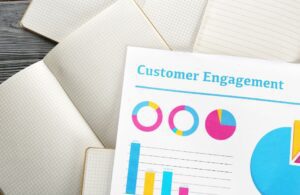Which social media platform is best for your business’ marketing strategy?
So many of us spend our spare time scrolling through our phones when we’re trying to kill time, so engaging with your target audience on social media is the perfect opportunity to grab their attention.
Traditional means of publicising your brand and reaching out to your audiences such as TV and newspaper adverts, trade shows, and flyers are rapidly becoming a thing of the past. As effective as it may be for your brand to have a large presence for the whole world to see, the rise of social media gives businesses a more targeted focus at a fraction of the price.
Advertising your products and services on social media is mostly free, with the option of paid adverts that are still cheaper than traditional means of offline marketing. Social Media engagement and the use of hashtags allows businesses to target consumers who are likely to be converted to customers.
If you’re working on a tight marketing budget, are low on manpower, and unsure where to start from, it’s best to choose the right social media platform for your specific business and target audience. It’s far more effective to invest your resources into the social media platform that will work best for your specific business, than struggle to keep up with 3, or 4 different social media accounts.
By focusing on one platform, you’ll be able to engage with your audience better, build strong relationships with your customers, and spend your marketing budget in a more effective way.
We were able to speak to a few business owners about the social media platforms that work best for their brand, the industry they’re in, and their audience to figure out which social media works best for different companies.
Choosing your preferred platform doesn’t only come down to the type of products you’re selling, but also the demographic and more specifically, the age group of your target audience. For example, we’ve found that Facebook is optimal when targeting 25-34-year-olds and the 45+ age bracket, whereas Instagram is ideal for millennials.
From speaking to SMEs and conducting independent research, we’ve found that businesses selling products, as opposed to services have more success on Instagram than Twitter or Facebook.
This is usually attributed to the ease of visually displaying products on Instagram, along with the ‘purchase’ feature that you can add to images when uploading content to your grid. On the other hand, Twitter and LinkedIn seem to appeal more to businesses selling a service, as they find it easier to interact with other businesses and potential clients.
With over 2,270 million active users worldwide and 30 million in the UK– where 45% of them use the platform several times a day, well look into Facebook’s digital marketing benefits first.
Statistics show that Facebook is most popular for the E-commerce and retail sectors, suggesting that Facebook’s environment, engagement, and advertising opportunities are better suited to retailers. In 2015, Facebook influenced approximately 52 per cent of customers’ online and offline purchases, up from 36 per cent in 2014, making the platform an obvious choice for any business that is reaching out for online sales conversions.
It’s become apparent that the number of users between 45 and 54 years old is the fastest growing population on Facebook, which also reflects our findings when speaking to small business owners. Deborah Clarke, Founder of Creative Clay for All gave us some insight into her use of Facebook:
I use Facebook for business to customer interaction. My target audience is age 30 upwards, either living in Dorset or visiting the area. Some may be parents and some may be partly retired. My audience is used to Facebook but some are starting to learn about Instagram. I use local Facebook groups to advertise my workshops but it is important to have interesting content and images regularly and not just sales pitches.”
Clarke’s comment doesn’t only highlight the fact that Facebook is more appealing to people in the 25+ age group, but it also shows the effectiveness of Facebook when interacting with other business owners and members of your community through groups. The increased usage of social media platform Instagram and it’s popularity amongst the younger generation is expectedly overshadowing Facebook, with estimates that 700,000 fewer 12- 24-year-olds regularly used the platform in 2018, compared to previous years.
If you want to target millennials, make sure your business is on Instagram and engaging with the 90 per cent of active Instagram users that are under the age of 35. At a rate of 16.7 million monthly users in the UK, Instagram is certainly skyrocketing across the nation and the world at a remarkable rate.
If you have an online business and you can get customers directly from your social media to your store, then it’s a no brainer- Instagram should definitely be your most used social media platform.
With 58% more interaction per user than Facebook, and 68% of Instagrammers interacting with brands more frequently, this seems like the best platform for brand engagement. More brands are hopping onto Instagram because of its large user basis and more specifically, brands targeting the younger generation tend to view it as their most important social media platform.
We spoke to Kalina Halatcheva, Managing Director of Nouri Truffles on the company’s preference of Instagram for brand outreach:
“It’s really important to show the product in as many realistic images as possible and we have found Instagram to be the best platform for that! They say people eat with their eyes, so Instagram enables our customers to ‘taste’ the product in that sense and if they like it to buy with a swipe of a finger.”
Halatcheva highlights the importance of visually presenting your products to an audience. What makes Instagram so remarkable is that you’re able to showcase your products online, interact with potential buyers, and give them the ease of impulsively buying- all in one place. The Truffles company “have doubled [their] online sales since connecting Instagram to the online store, but more importantly, have tremendously increased the frequency of communication with clients through direct messages, comments and emails, which is priceless!
It appears that Instagram is the ideal social media platform for snack companies, particularly when engaging with Influencers to maximise engagement. Ella Rauen–Prestes, Founder of Fitbakes (a low sugar cake company), gave us some insight into how collaborating with Instagram Influencers helped increase the business’ growth.
“We founded the company in 2017 and didn’t have the available budget to [go to trade shows], so we decided to invest in social media, more specifically Instagram. We work with over 700 influencers (we just send samples and ask for honest opinions), and this action grew our following to over 20k followers on Instagram and over 30k across all social media channels.
Rauen–Prestes went on to say that even their “new packaging was designed aiming for how it would look on social media pictures.” As narrow as this approach may seem to some, it worked” for Fitbakes and helped their sales go “from £14k in 2017 to £55k in 2018,” with 80% of these sales coming from Instagram. We’ve created a brief diagram (above) to show just how much businesses like Fitbakes can grow through targetted social media marketing to the right audience.
Being present on social media and making a habit out of responding to your comments and messages will please your customers and will also place you a step ahead of your competitors. It’s been found that 89% of messages sent to brands via social media get ignored, which defeats the purpose of “engaging” with your following altogether. Keep your followers engaged by interacting with them, responding to them, and converting them into sales. Doing this is also a good way of associating your brand with a tone and personality, making you more relatable.
71% of consumers who have had a positive experience with a brand on social media are likely to recommend the brand to their friends and family.’ If there’s a time and place to be more casual and informal with your customers, it’s through social media.
When it comes to providing excellent customer service, Twitter seems to be the best platform for it:
-
78% of Twitter users that post a complaint to a brand expect a response within an hour
-
67% of Twitter users would buy from the brands they are following on Twitter
-
77% of Twitter users report feeling more positive towards a brand when their tweet has been replied to by the brand’s Twitter account
These statistics show the importance of monitoring your Twitter retweets, replies and mentions. Make sure to regularly check any hashtags associated with your brand as well and respond to these as soon as you can- this will show customers that you care about their customer journey and that you take both positive and negative feedback on board.
Clarke, from Creative Clay for All , spoke to us about the importance of using hashtags on Twitter, especially regional ones for local businesses.
“I use Twitter for business to business interaction, using #DorsetHour to interact with local businesses. This can lead to collaborations, recommendations and new venues.”
Linkedin has recently gained more attention in the business world as the main platform for networking amongst businesses. Whereas the other 3 social media platforms mentioned in this post (Facebook, Instagram, and Twitter) make it easy to interact with other businesses and customers through your business’ account, it’s more common for entrepreneurs to interact amongst themselves on Linkedin. Despite the number of Linkedin users not being as high compared to other social media platforms, Linkedin users are more active and focused when using it.
The way that Linkedin connects people to each other is ideal as you’re both ‘following each other’ when the connection is made, which means that any connections you initiate will end up seeing your content on their feed. When comparing this to platforms such as Twitter and Instagram, following accounts doesn’t necessarily mean that they’ll follow you back- making it harder to reach out to potential clients.
With new members joining Linkedin every second, the platform’s popularity is increasing as some entrepreneurs prefer the ‘smart-casual’ alternative of Linkedin compared to other social media platforms. It enables you to still engage online, but by using your personal expertise and networking abilities as the first point of contact, as opposed to solely doing it through your company’s name.
Ellen Cole, Director of Little Seed Group prefers Linkedin for its effective B2B marketing abilities:
“There are a number of social media channels which are suitable for Marketing, PR and Social Media Agencies, such as Instagram and Facebook, however, I have found the best social media platform for B2B business is Linkedin. [Its] business focussed, which provides me with the opportunity to build new relationships with other like-minded professionals as well as generate new clients.”
LinkedIn should definitely be a part of your strategy based on the amount of people on the network with a large budget to play with.
If you’re considering switching to Linkedin as your main social media outreach platform, remember that visual and interactive content will usually perform better. This should generally be a rule of thumb for most social media posts, as your content will need to stand out amongst a saturated feed. There’s approximately 89% better engagement on posts with pictures on LinkedIn, and 200% more engagement on posts that have links.
Whether you’re running your own business, or you’re a marketer for a business, using Social Media can undoubtedly help increase the business’ following, which will, in turn, broaden your pool of contacts that can be converted into sales leads.
Once you’ve decided which social media platform is best for your business’ marketing, then make sure to publicise your social accounts to increase engagement. Adding your social media handles with links to your accounts in all your email communications is a great starting point to spread awareness around your brand’s social media presence.
Even when briefly glancing at the figures, it’s clear that a large percentage of people and businesses use social media and the odds are that your competitor is already active on Facebook, Instagram, Twitter, or Linkedin. Regardless of whether you choose to outreach your marketing on one social media platform or all of them- make sure you focus on the platform that is most appropriate for your brand. If you find yourself struggling when managing different accounts, why not consider investing in a social media scheduling tool? Some popular examples include Hootsuite, Buffer, Hubspot, and Sprout Social.
Sources:
https://www.statista.com/statistics/272014/global-social-networks-ranked-by-number-of-users/
https://www.thedrum.com/news/2015/04/24/facebook-influences-over-half-shoppers-says-digitaslbi-s-connected-commerce-report
https://www.holbi.co.uk/social-media-marketing-stats
https://www.theguardian.com/technology/2018/feb/12/is-facebook-for-old-people-over-55s-flock-in-as-the-young-leave
http://www.rosemcgrory.co.uk/2018/01/01/uk-social-media-statistics-for-2018/
https://www.lyfemarketing.com/blog/social-media-marketing-statistics/










